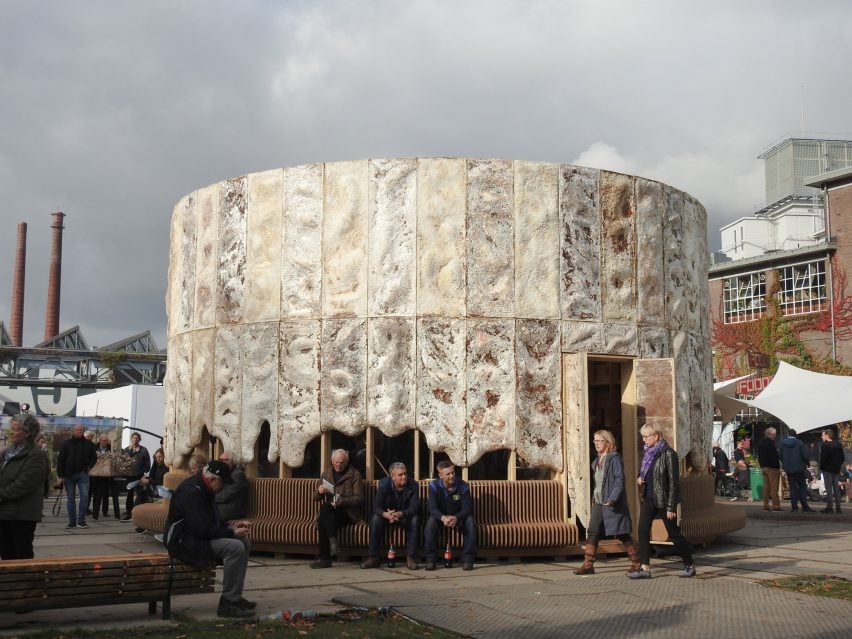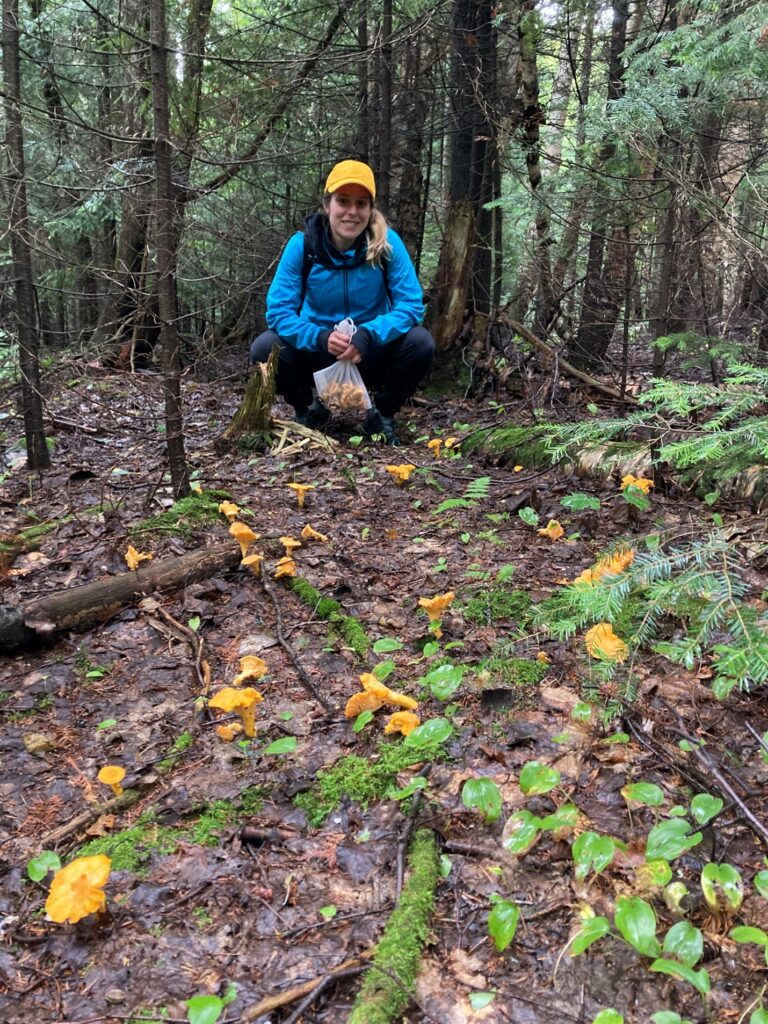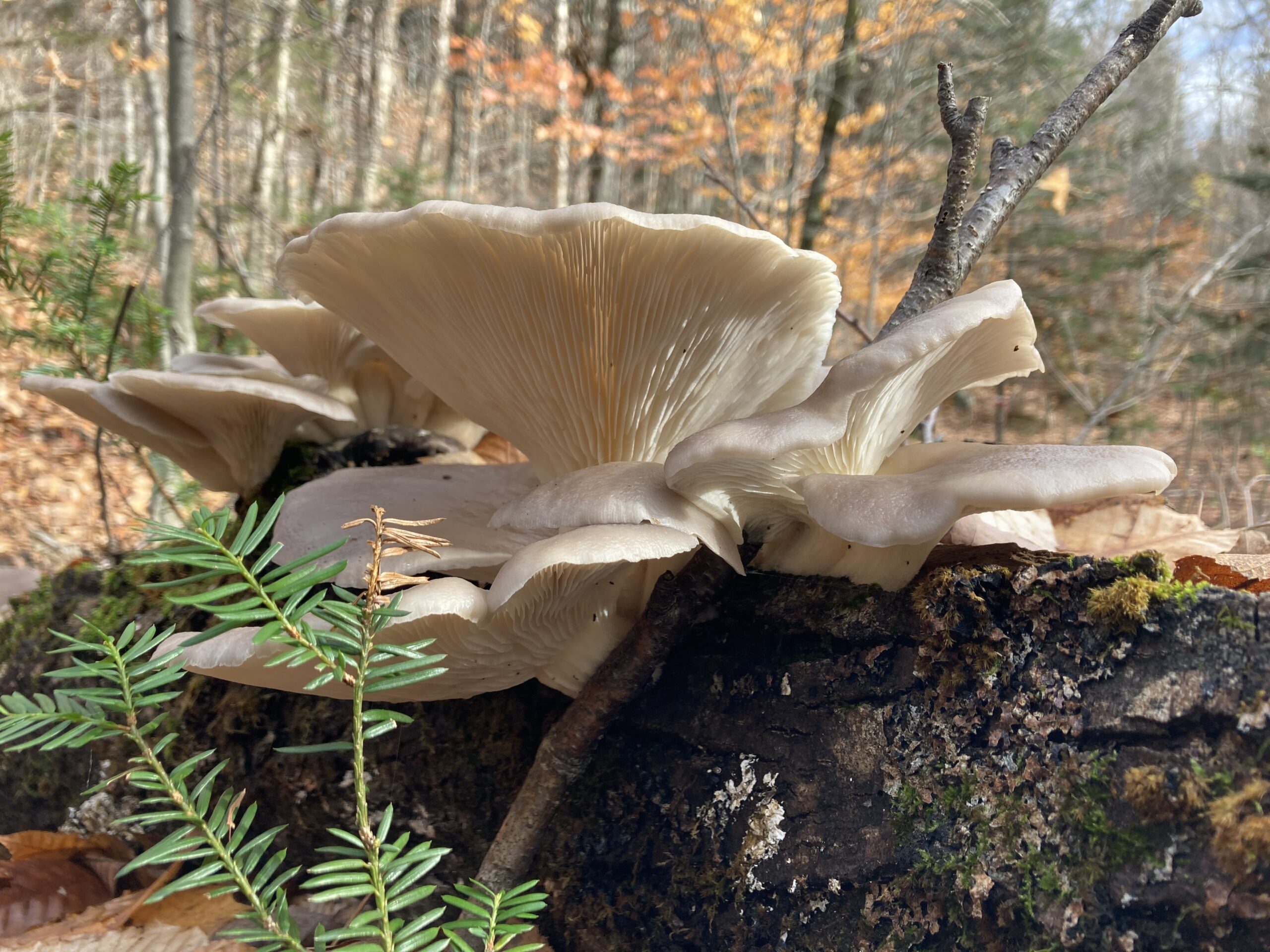On Tuesday March 21st, TRACE’s Research and Policy Lead Emily Guy attended The Association for Preservation Technology (APT) MATERIALS TALK #16 series titled; “More Than Mould: The Other Fungi.” The workshop was presented by Mycologist Michael Warnock, an active member of the Mycological Society of Toronto and founder of ID Onsite Inc., a company with a focus on fungal growth in water-damaged buildings.
As somewhat of an amateur Mycologist, Emily is keen on learning more about how moulds and fungi, are changing the way we think about buildings and sustainable practices, and its applications beyond its use as a culinary wonder (depending on your appetite!). Mushrooms have been used, consumed and studied for thousands of years in many parts of the world, however, only recently have they become more ‘mainstream’ in North America. Its popularity is growing for a variety of reasons despite many cultures having foraged, cultivated, built and explored fungi for millennia.
Fungal Growth in Buildings

When it comes to built spaces, the more we know can help inform the choices we make in the future – for better, or for worse! The APT workshop focused predominantly on how the appearance of moulds and fungi can inform common problems in older buildings, how to address the issue, or how to prevent it. For instance, identifying moulds, fungi, and wood rot will provide clues about damage or health and safety concerns. Fungi and moulds produce differently, knowing what you are dealing with may help identify the problem. Simplistically, mushrooms are opportunistic – by identifying the type of mushroom you may be able to understand what it is feeding on and the type of building issue at hand.
For example, a wood rotting fungus will tell you that there may be serious structural damage to a building, as they feed on cellulose (which will significantly impair the strength of wood). Mushrooms can also inform the presence of unmanaged water. The challenge is that the mushroom does not always appear at the source but rather, due to the length of the mycelium (the complex network of ‘roots’ that mushrooms have), the mushroom itself may be located in a completely different room of a house, away from the root cause. This means, if you find a mushroom growing on your main floor – you may want to check your basement or your bathroom!

Fungi as a Building Material
Mushrooms, as a natural material have been explored in recent years for their potential in the construction industry in the search for sustainable options. Mushroom mycelium has been used for packaging purposes, replacing products like Styrofoam, to great success. It’s also very reusable and completely compostable.
Mycelium regenerates impressively, is non-toxic, produced naturally and has insulating properties. Its potential may also help the industry reconsider the environmental impact of buildings and construction. Early research has experimented with several interesting projects that include mushrooms as a building material. Two examples include the Hy-Fi (2014), an organic brick tower designed by David Benjamin a part of MoMA’s Young Architects Program, and the Growing Pavilion in Eindhoven (2019)—a temporary events space constructed with panels grown from mushroom mycelium supported on a timber frame. The Pavilion was designed by set designer and artist Pascal Leboucq in collaboration with Erik Klarenbeek‘s studio Krown Design at the Amsterdam studio, Biobased Creations.

This is only a snapshot of how a better understanding of moulds and fungi may lend itself to many new applications in the construction industry and help us better address issues in older buildings. At the very least, a little bit of knowledge on mushrooms can pave the way for a very interesting, and sometimes delicious, new world.


